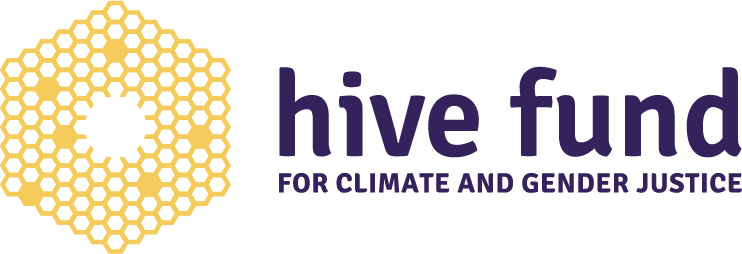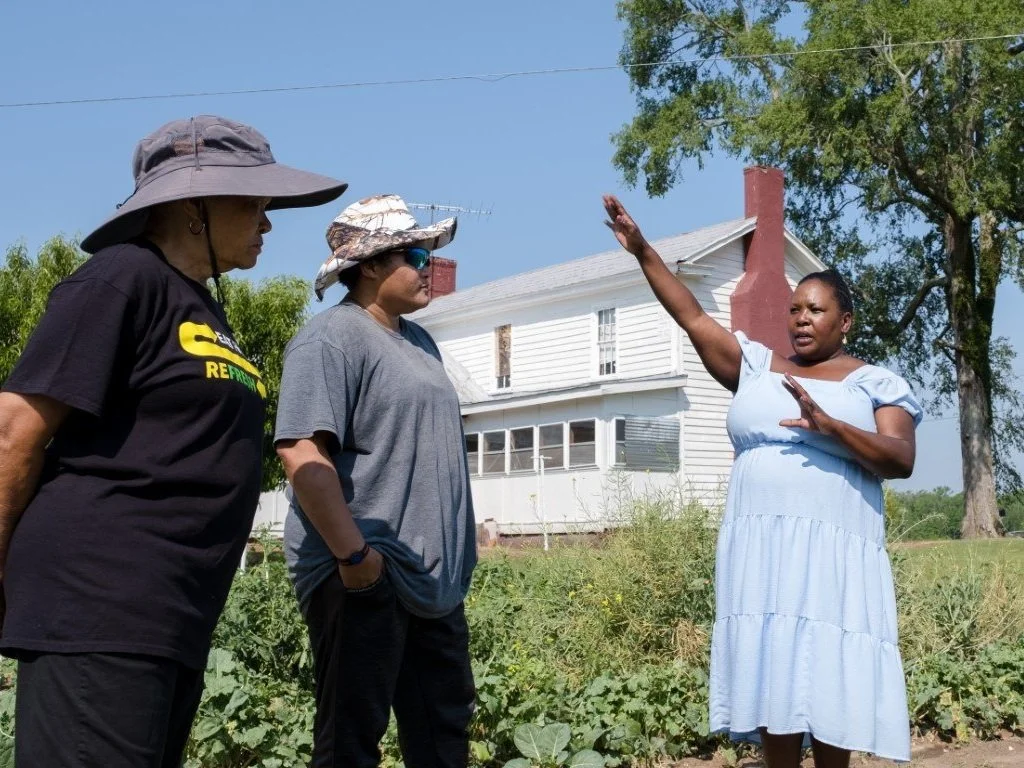Making Good on the Inflation Reduction Act’s Promise
We are living in an exciting whirlwind of a moment. Thanks to a powerful push by youth, environmental justice, and climate movements who re-framed climate solutions around clean energy investments, good jobs, and economic justice, we have an historic chance to implement a set of potentially transformational new federal policies. The Infrastructure Investment and Jobs Act (IIJA), the Inflation Reduction Act (IRA), the Justice40 Executive Order, and the new Environmental Justice Executive Order together promise to rapidly shift hundreds of billions of our collective tax dollars to build, in the words of White House senior clean energy advisor John Podesta, “an equitable clean energy economy from the bottom up and the middle out.”
If these new policies are going to achieve that promise, those with the most to gain and lose in the transition to clean energy need to be front and center as we move to design and implementation. We’ve heard many in philanthropy argue that there’s not enough time to overcome systemic barriers to engaging these groups—and that even trying will slow down the process of reducing climate pollution. In fact, the exact opposite is true.
Courtesy of the Sunrise Movement
People of color, women, and young people pushed climate justice to the top of decision-makers’ agendas. Multiracial and working-class coalitions organized in key voting battlegrounds to create the conditions for passage of these bills. Now, place-based groups representing communities of color and working-class communities have powerful visions for implementing them in ways that improve the lives of a broad swath of Americans, and are ready to provide the organizers, doers, builders, and connectors to make those visions come to life. As we toured the South last spring talking to more than 70 climate and environmental justice groups, eagerness to “build the good” came up again and again as a top theme. When communities that fought so hard to get us to this point are able play a meaningful role in implementation and start to see and feel tangible benefits, faith in government can grow, imaginations and solution sets can expand, and political momentum can build — leading us to the tipping points we so need.
Distressingly, climate funding for exactly these kinds of groups seems to have peaked soon after George Floyd and Breonna Taylor’s brutal murders and has been on a steep decline ever since. Many climate justice groups funded in 2020 and 2021 are facing potential cliffs — with the real possibility of massive layoffs happening just when we need them most. Significantly scaling up climate grantmaking with an equity focus will help ensure that the opportunity of IRA and IIJA to spark a transformational shift is not lost. Here are some key approaches foundations and donors can take, and groups and initiatives they can fund now:
Make multiyear, general support grants to community-based organizations that will be engaged in developing, financing, implementing, and communicating about clean energy and other climate justice projects.
A recent University of New Hampshire study identified barriers to clean energy project development in low income and low wealth communities and recommended that “funders and policymakers…think holistically about building the ecosystem required to identify, develop, and then finance impactful and investable projects. This work requires more than providing low-cost capital or credit enhancements to financing pools of projects. The hard part is supporting the work of community-level organizations that can understand community needs and interests, create investable deals responding to those needs, and shepherd them through the financing process.” Specialized re-granting intermediaries like the Hive Fund for Climate and Gender Justice, Climate and Clean Energy Equity Fund, The Solutions Project, NDN Collective, and others with place-based staff have the relationships and local expertise to support community visions through this “hard part,” and are already in funding partnerships with hundreds of community-based organizations across the nation.
Keith Downey (Northeast Houston Redevelopment Council) at an IRA planning workshop the Hive Fund hosted with our Houston grantee partners.
In Houston, for example, the Hive Fund is supporting more than 20 organizations in the predominately Black and Brown Northeast quadrant with multiyear grants and local coordination support to address community-identified priorities of increased home weatherization and energy efficiency, affordable and resilient clean energy access, and equitable and clean mobility, and connect this local work with statewide civic engagement and communications efforts. (Read more about our Houston work here) Community organizing groups like West Street Recovery and the Coalition for Environment, Equity, and Resilience are using philanthropic and federal funding to get repairs and energy efficiency retrofits done for homes with deferred maintenance, irregular home ownership, or other barriers. These same groups are working with Solar United Neighbors to test how they can aggregate customers and bulk-purchase rooftop solar in these same neighborhoods and hope to pilot financing models such as on-bill financing through local utilities. Groups are getting organized with city and county allies and preparing to apply for EPA capacity-building block grants and then even bigger Greenhouse Gas Reduction Fund loans once they become available. The seeds of these kinds of efforts are germinating in New Orleans, Atlanta, the rural Black Belt, the Texas borderlands, and beyond — ready to grow if watered.
Support regional hubs and coordinated networks. Several environmental and climate justice networks are building on relationships they’ve developed over many years to connect communities of color and low wealth communities to new federal funding opportunities. For example, the Deep South Center for Environmental Justice and the Bullard Center for Climate and Environmental Justice at Texas Southern University have organized 22 regional hubs in 10 US states across the South to bolster the capacity of community-based organizations to secure federal funding for environmental justice projects. The Justice40 Accelerator, a collaborative project anchored by Partnership for Southern Equity, has supported more than 100 climate and environmental justice organizations in accessing financing to implement community designed solutions while also advising federal agencies on how to best reach historically disadvantaged communities. The Communities First Infrastructure Alliance, housed at the Communities First Fund, is establishing hubs that enhance coordination among capacity builders, technical assistance providers, federal agencies, and practitioners to support community-centered projects. All of these hubs and implementation supports will be in high demand as compliments to the EPA’s regional Thriving Community Technical Assistance Centers that will be selected and stood up in the summer of 2023 and will be vital to effectively moving resources at the pace these federal policies demand.
Fund collaborations among partners taking transformative local solutions to scale.
Communities facing economic distress often have resourceful solutions that can scale to rapidly expand opportunity and investment. For example, Clean Energy Works learned through strategic local projects in six states that rural utilities serving economically distressed areas have a 99.9% rate of recovery and much higher participation when they pay for energy efficiency upgrades rather than referring customers to seek a loan or a grant. With the support of philanthropic funding, Clean Energy Works fueled partnerships that won this kind of upfront utility investment at more than 20 utilities across 10 states. They are now working with community advocates, policy makers, public agencies, and utilities to apply similar solutions in the transportation sector.
Ajulo Othow (right) at one of the solar plus storage project sites. Photo by Cornell Watson.
Roanoke Electric Cooperative, a rural electric utility in North Carolina, partnered with EnerWealth Solutions and four Black farmers who will lease land for solar and battery systems distributed across the utility’s service area. This local project will reduce the cost of energy for the utility and ratepayers while increasing the system’s resilience. It also connects Black farmers and community members who have been left out of the solar boom in the region to the growing clean energy transition. EnerWealth is now working to replicate this partnership across many rural electric coops throughout the country’s Black Belt and beyond.
Intentionally overcoming systemic barriers to engaging groups working for climate, racial, and economic justice at the local level is the key to speeding up the process of reducing climate pollution and ensuring that progress is durable. Local groups across the country are eager to play a role in shepherding in clean energy projects that will not just cut emissions but also clean the air, make homes more resilient, and build wealth in historically disinvested communities. Philanthropy has an urgent imperative to not just call this an historic moment, but to make it one.



